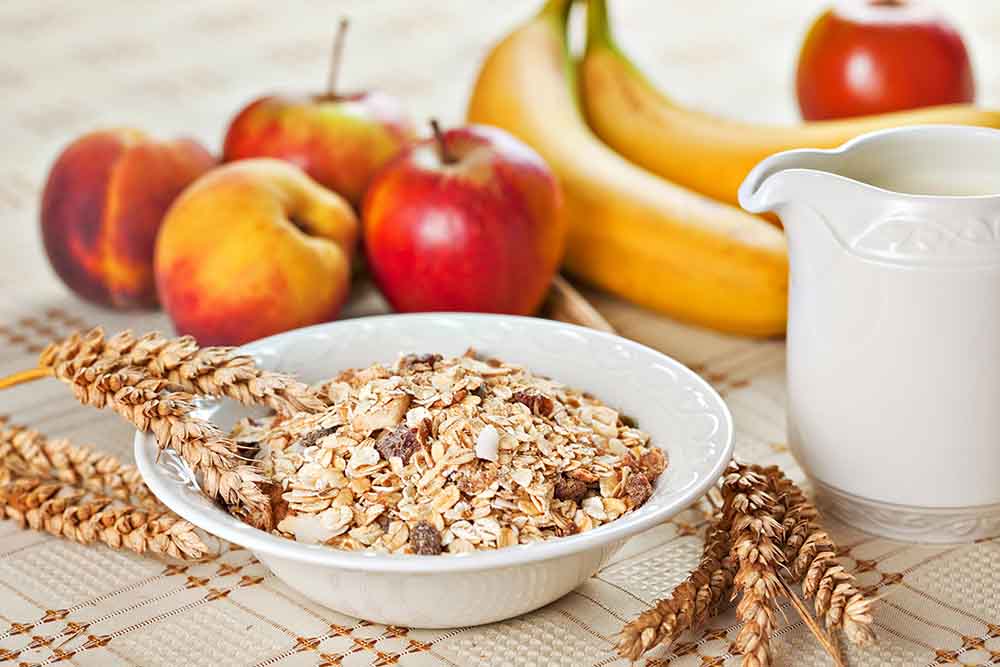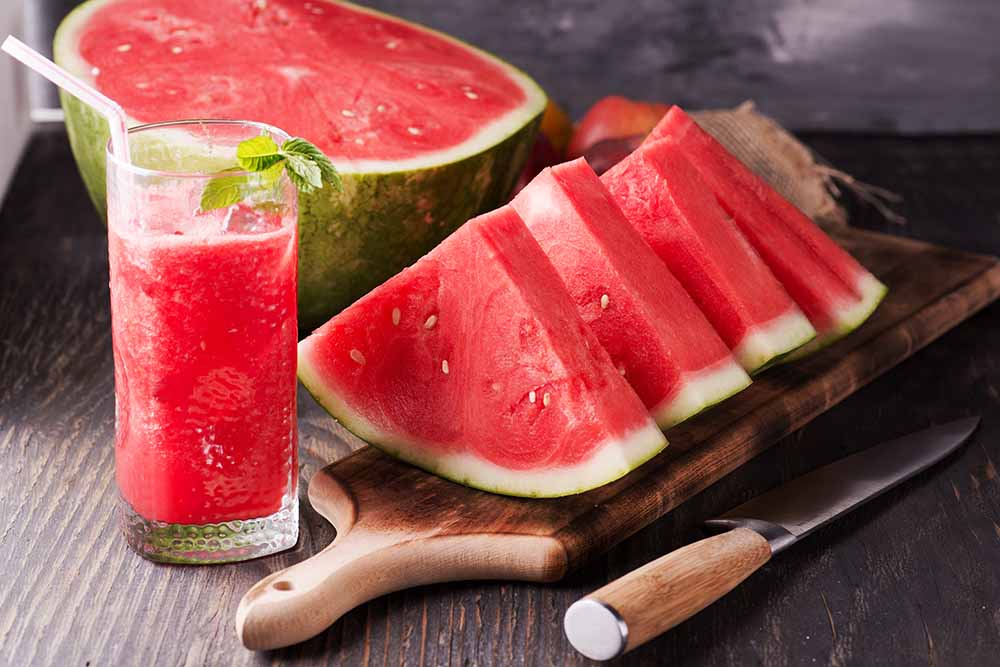There is a rule to lose weight effortlessly – 80 per cent nutrition and 20 per cent exercise. Diet contributes more to the weight loss journey than exercise, but that does not mean exercise is not essential. A healthy diet consists of low-calorie food that keeps us full for a long time. Light body movements like walking, jogging, dancing and jumping jacks help to boost metabolism by burning these calories.
What are low-calorie foods?
Food with 40 calories or less per serving, 50 per cent less fat and 50 per cent less sodium is considered low on calories. Read further to know their benefits in a diet.
Benefits of Eating Low-Calorie Foods
Low-calorie food items have high nutritional value. They are loaded with proteins and fibres to reduce unhealthy snacking between meals. High-quality fibre can be obtained from fruits, vegetables, and whole grains. Protein can be obtained from meat, dairy and vegetables. Both nutrients benefit the body in the following ways.
1. Aids in Weight Control
Following a low-calorie diet means consuming less food than usual. The average human body requires 2,000 to 2,500 calories daily to maintain the same weight. A low-calorie diet reduces this requirement by 50 per cent, that is, consumption of 1,000 to 1,250 calories, thus aiding in weight loss.
2. Promotes Healthy Living
If done right, a low-calorie diet may contain the essentials of a balanced diet, which means burning unhealthy fat cells from the body while promoting better functioning of all the organs.
3. Ensures Well-being
Food with no calories often contains minerals and nutrients essential for the well-being of the body and mind. These minerals ensure a healthy sleep schedule and a stronger immune system.
4. Controls Blood Sugar Levels
High blood sugar levels, caused by unhealthy consumption of sugar and carbohydrates, lead to a risk of developing diabetes and heart diseases. A diet rich in low calorie food does not contain these ingredients.
Top Low-Calorie Food
Here are 20 low-calorie high-volume foods that need to be added to the grocery list to attain all the healthy body goals this year.

1. Oats
A serving of cooked oatmeal contains 140 calories, 10 grams of protein, 2.5 grams of fat, 28 grams of carbs and 7 grams of fibre. Oats are induced with high-quality protein, antioxidants, vitamins and minerals that lower cholesterol levels in the body and promote healthy skin. With its beta-glucan, the food digests slowly, instilling a feeling of fullness for hours.
2. Popcorn
A serving of air-popped popcorn (around 3 cups) contains 60 calories, 3 grams of protein, 18.6 grams of carbohydrates, and a minimal percentage of other nutrients. Popcorn is a good source of polyphenols (an antioxidant) that improves blood circulation and the digestive system while lowering the risk of developing cancer.
A 2012 study stated, “Popcorns are more satiating than other finger foods.”
3. Greek Yogurt
A serving of low-fat greek yogurt contains 140 calories, 20 grams of protein, 3.8 grams of fat, 7.9 grams of carbs, 7 grams of sugar, and no fiber. This versatile and delicious food benefits bone health improves gut health, supports muscle recovery, lowers blood pressure and keeps one full to support healthy body weight.
4. Legumes
A serving of cooked legumes (such as beans, lentils, and peas) contains 200 calories, 15 to 20 grams of fibre, and 18 grams of protein. With their high fibre and protein content, legumes have made it to the top of low-calorie filling foods. They lower blood pressure, benefit the digestive system, repair cell damage and help prevent cancerous cells.
5. Berries
A serving (around 150 grams) of berries (such as strawberries, blueberries, raspberries, and blackberries) contains 80 to 90 calories, and 3.6 grams of fibre, vitamins, minerals and antioxidants. They contain pectin, a dietary fibre that slows down the process of digestion, thus providing a feeling of fullness. Eating berries regularly improves cognitive health, prevents cancer, and lowers blood pressure.
Other Low-Calorie Foods
6. Soups
A broth-based or stock-based chicken soup contains around 120 calories, 6 grams of protein, 7 grams of carbohydrates, 6 grams of fat and no dietary fibre. Some researchers showed that despite containing the same ingredients, soups might be more filling than the solid version of the food. It builds and repairs muscles, skin, bones and blood cells.
7. Eggs
A large egg contains 72 calories, 6 grams of protein, 5 grams of healthy fats, vitamins, minerals iron, and carotenoids, along with lutein and zeaxanthin (some disease-fighting nutrients). A few studies showed that high protein breakfast slows the process of stomach emptying and decreases snacking. This low-calorie healthy food also improves the levels of good cholesterol in the body.
8. Chia Seeds
One ounce of the superfood chia seeds contains 140 calories, 5 grams of protein, 10 grams of fibre and moderate percentages of sodium, potassium, calcium, iron, magnesium and essential vitamins. The soluble fibres present in this low-calorie food absorb liquid from the stomach and swell up to provide fullness. It promotes heart health, regulates cholesterol levels and promotes intestinal health.
9. Fish
A serving (around 85 grams) of cooked fish contains 60 calories, 13 grams of protein, minerals and omega-3 fatty acids. Increasing protein intake decreases appetite by decreasing ghrelin levels - a hormone that increases hunger.
10. Cottage Cheese
A serving (around 220 grams) of this healthy snack contains 160 calories, 30 grams of protein, 6.2 grams of carbs, 2.3 grams of fats, and 24 per cent phosphorus. Some researchers proved that cottage cheese and eggs have the same effect on fullness.
11. Potatoes
One medium-sized baked potato contains 160 calories, 4 grams of protein and 5 grams of fibre. Due to their association with chips and French fries, potatoes are considered unhealthy, which might not be accurate. They are pretty satiating if consumed in the correct form.
12. Lean Meat
A serving containing 100 grams of lean meat contains 160 calories and 32 grams of proteins. This meal is proven efficient for reducing hunger and providing essential nutrients to the body.
13. Cucumber
A serving (around half a cup) of cucumbers with the peel contains 30 calories, 95 per cent water content, vitamins, minerals, and anti-inflammatory agents. This fruit can serve as a snack between meals to suppress appetite.
14. Carrots
A medium-sized carrot contains 25 calories, 3 grams of sugar, 2 grams of fiber, 6 grams of carbohydrates, and a gram of protein. Carrots and cucumber, when consumed together, may become a healthy snack for weight loss.

15. Watermelon
A serving (around 150 grams) of diced watermelon contains 46 calories, along with vitamins A and C. This fruit meets 10 per cent of the body's daily water requirement while keeping it full.
16. Lettuce
A serving (around 100 grams) of shredded lettuce contains 15 calories, 0.2 grams of fat, 194 mg of potassium, 2.9 grams of carbohydrates, and 1.4 grams of protein. It can be a healthy replacement for bread or tortilla in wraps.
17. Shrimps
A serving with 3 ounces of cooked shrimp contains 85 calories, 12 grams of protein, 0.1 grams of total fats, and minimal amounts of sodium, potassium, iron, and micronutrients. Insufficient protein increases hunger; it is best to include shrimp-based meals in lunch or dinner to maintain a healthy appetite.
18. Arugula
A serving with 100 grams of raw arugula contains 25 calories, 0.7 grams of total fat, 3.7 grams of carbohydrates, 2.6 grams of protein and 369 mg of potassium. It might complete 50 per cent of the body's daily vitamin K requirement and retain fluid levels to lower blood pressure.
19. Zucchini
A 100-gram serving of raw zucchini contains 17 calories, 0.3 grams of total fat, 1.2 grams of protein and 1.1 grams of dietary fibre. When replaced with zucchini, pasta and other unhealthy carbs might aid in weight loss.
20. Almonds
An ounce of almonds contains 160 calories, 14 grams of total fat, 3 grams of fibre, and 6 grams of carbohydrates. Consuming 25 almonds daily may improve bone health, lower blood sugar levels and reduce hunger.
Conclusion
Does a heavy drop in calories help you lose weight quicker? Surely it does, but do not forget to note that it can create long-run damage by dropping metabolism rates and developing eating disorders (especially anorexia). Prepare low-calorie meals keeping in mind the body's 1,000 to 1,250 daily calorie requirement.
FAQs
What is the best low-calorie food?
Strawberries, spinach, arugula, carrots, cucumber and berries are some of the most low-calorie foods.
How to eat fewer calories?
To start, prepare a meal plan with low-calorie foods in two categories - those consumed as meals and those used for snacking.
What happens if you don’t eat enough calories?
Consuming fewer calories than advised might lead to anaemia, infertility, reduced bone and dental health and thyroid dysfunction.
How many calories per day?
A female body requires 2000 calories per day, and a male body requires 2500 calories per day to maintain a normal weight.
How do you count calories in food?
Use a calorie counting app to identify the number of calories in the food as per its weight.
We recommend you to consult a dietician for guidance on including these foods into your diet.